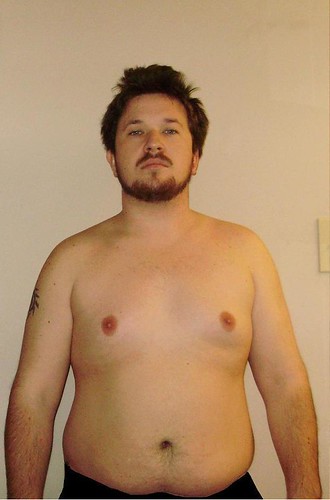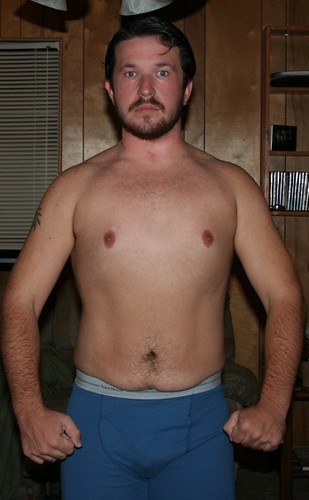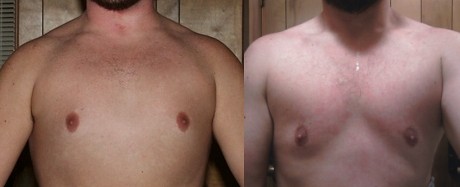Exercise and increases in activity have been shown to be beneficial in settings of sarcopenia; exercise even in the very old can increase strength and muscle function.
Lack of exercise is currently thought to be a significant risk factor, increasing the likelihood of sarcopenia. Sedentary people often lose a pound or more of muscle mass annually. The loss of 10 pounds of muscle every decade is one troubling consequence for people choosing a sedentary lifestyle.
Not only muscle but the entire musculoskeletal system of muscle, neuromuscular responsiveness, endocrine function, vasocapillary access, tendon, joint, ligament, and bone, depends on regular and lifelong exercise to maintain integrity. Even highly trained athletes experience the effects of sarcopenia. It is interesting to note that athletic speed and strength records are generally set by individuals no older than 30 years of age, although some powerlifters and other strength athletes continue to set records into their 50s.
Simple circumference measurement does not provide enough data to detemine whether or not an indivdual is suffing from severe sarcopenia. (Body fat percentage measure pounds of fat vs total body weight. You body weight can stay the same or even decrease and pounds of body fat can increase thus showing a loss of lean body mass. It is ideal to track body fat percentage, especially when active in weight loss.)
Sarcopenia is emerging as a major health concern due to the lessened physical activity and increased longevity of industrialized populations. It can progress to the extent that an older person may lose his or her ability to live independently lead to linked to poor balance, gait speed, falls, and fractures.
The best way to manage sarcopenia is with an exercise program that is balanced with cardiovasular exercise and strength training. Resistance training (lifting weights) is probably the mose effective way to prevent and treat sarcopenia.
My thoughts:
I lost 60 pounds from the age of 24-25 of which 10 lbs was lean body mass. Muscle is 10% water and lean body mass is everything in the body that is not fat as is also known as fat free mass. You might have heard muscle weighs more than fat. This statement is true but flawed in it's wording. 1 pound of fat weighs the same as 1 pound of muscle, the difference is the density. 1 pounds of fat takes up more space than 1 pound of muscle. Therefore, it is an issue of volume and when people say they want to lose weight I doubt they care about how much pressure their body places on surfaces. What they really want to do is reduce in size. You can "lose weight" by just watching portion size and calories intake which has been marketed by programs weight watchers and Jenny Craig. You can also lose weight by burning calories through exercise. "Dieting" without exercise will lead to weight loss but it is not efficient in reducing the ratio of fat to lean body mass measure as body fat percent. Weight loss is great at reducing risk for certain disease and can help improve self esteem and energy level but I doubt anybody wants to be "skinny fat", a smaller version of your old self. It is ideal to try to maintain or even increase lean body mass while losing fat. Transforming your body into a lean healthy muscular verison of your old soft chubby self.
I am unfortunate in that I lose my measurement and body fat reading when I first ventured out into my weight loss journey in June 2008. I do remember I weighed 246 lbs and I am between 5'6"-5'7". I signed on with a trainer for a 90 day rapid weight loss program but in the middle of it I was handed over to another trainer and the new trainer broke her foot and somehow my records were lost. I tried to recover them a year later when I moved to a new gym but I got no replies from my email and my trainer could not find them.
What I do know is that in November 2008 I weighed 231 pound and was 31% body fat. That mean I had 71 pounds of fat in my body and 160 pounds of lean body mass. I reached my "goal weight" 11 months later in October 2009 weighing 185 lbs. I was at 19.1% body fat which means
35 pounds of fat and 150 pounds fo lean body mass. At that time I thought I had lost 10 pounds of muscle but recently I am under the impression that water weight was most likely a large part of it as it is also a part of lean body mass.
Here is a picture of me around November 2008:

Here is a picture of me in October 2009:

Today I measured and I am 175.6 lbs and 16.9% body fat.
Chest 10/2008 compared to 4/2011:

I am 9 pounds lighter than I was a year and a half ago. Sometime around Sept/Oct 2009 I started to change my focus. I decided the number on the scale was OK but I still did not feel I had reached my goal. I started doing alot of searching on the internet to find information on building muscle mass (I thought I had lost 10 pounds of muscle) and looking a pictures on bodyspace (part of bodybuilding.com) to find out what my goal body fat percent should be based on people of similar height and weight. I came to the conclusion than I wanted to be 10-12% body fat to get the goal image I had in my mind for myself. While searching articles I came across one about the body-for-life program. After reading the entire article it sounded like what I was looking for to reach my goal. It is a 12 week program, or challenge as they call it, that has every exercise down to number of sets and reps preplanned and a 20 minute cardio program that uses the HIIT (high intensity interval training) approach for fat loss without muscle loss. I decided to start the program in mid December 2009 so I could do it with my girlfriend (now fiancee) while she was in town for Christmas break and with ending date near her spring break. I got super focused and motivated with the goal results being 10-12% body fat. I followed the program by the book and lost 9 pounds but at the end I got really discouraged because I only got to 15% body fat and still had a flabby loose skin mid-section.
Right now I am in week 11 of my 3rd BFL challenge and have made alot of emotional improvement since than and no longer have an all-or-nothing perfectionist attitude and still would like to eventually reach my body fat goal but my focus is on strength and speed.

No comments:
Post a Comment